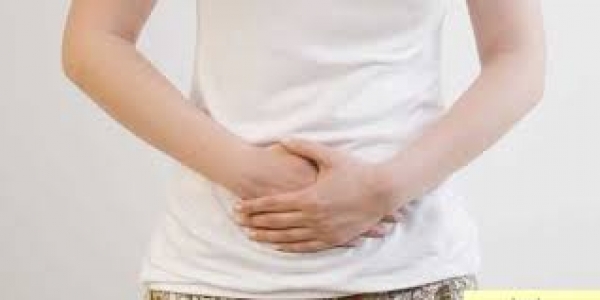Hanna Saadeh - Acute Diarrhea
Over all, the commonest cause of acute diarrheas are the noroviruses, which cause 50% of all diarrhea outbreaks, especially onboard of ships, nursing homes, hospitals, and dormitories. Serious bacterial infections caused by salmonella, campylobacter, shigella, E coli, vibrio, yersinia, listeria, etc., account for only a minority of diarrheas cases since most occurrences of diarrheas in traveling adults do not have identifiable causes.
Food-borne infections secondary to contaminated food items are responsible for 36% of all acute cases of diarrheas. Fresh fruits and vegetables, especially leafy vegetables, are the commonest carriers because they are easily contaminated and difficult to decontaminate. Contaminated poultry is responsible for the highest proportion of deaths because of serious salmonella and listeria infections, which are often associated with contaminated chicken.
Host defenses, which normally protect us from infectious diarrhea, include stomach acid, normal intestinal bacterial flora, and gastrointestinal immunity. When these defenses are weakened either by natural disease or by medications, more cases of diarrheas can occur. Hence, medicines, which reduce stomach acidity, and antibiotics, which disturb the natural bacterial flora, make us more susceptible to diarrheas. Also, extremes of age, autoimmune diseases, inflammatory gastrointestinal disorders, and immune suppressive medicines are associated with more cases of diarrheas.
The inoculum effect is crucial to understanding the infectivity of diarrhea. Organisms, which can overcome the host’s defenses and cause diarrhea in small numbers (i.e., <100 to 500 organisms) are considered low inoculum (i.e., high virulence) organisms. Of these, noroviruses are the commonest representative, followed by rotaviruses, shigella and others. Clinically, this means that person-to-person transmission through contaminated hands and surfaces is likely because visibly clean hands and surfaces can still carry enough organisms to cause infection. Hence, observing strict hygiene of hands and of the surfaces which come in contact with hands such as toilet seats, door and faucet handles, non- disposable towels, kitchen and table utensils, etc., is necessary for curbing the spread of diarrhea.
In contrast to low inoculum (i.e., high virulence) organisms, infection with moderate inoculum organisms (i.e., moderate virulence) such as salmonella and campylobacter requires 1000 to 100,000 organisms to be ingested. Infection with high inoculum organisms (i.e., low virulence) such as E coli and vibrio requires > 100,000 organisms to be ingested. The higher number of organisms needed to cause infection renders person to person transmission more difficult because such large amounts of organisms are not usually present on visibly clean hands and surfaces. For that reason, such large infecting doses are more commonly found in foods, which have been left for long enough period of time at room temperature for the bacteria to multiply and reach such high numbers.
Most acute diarrheas are self-limited and tend to resolve in a few days without medical intervention. Unless the infection is clinically severe, a 24-hour observation period is wise. If after 24 hours, the symptoms begin to improve, it is advisable to avoid antibiotics and continue to temper the symptoms with hydration and, when necessary, with Imodium and Metamucil, both of which are available over the counter. Imodium, which slows the bowel motility and Metamucil, which improves the stool consistency, should be used according to the labeled instructions. If vomiting is present, prescription anti-nausea medicines may be required. Continuous oral re-hydration is crucial, but must be taken in frequent small sips to avoid reactive vomiting or reactive diarrhea. Electrolyte rich fluids such as Pedialyte, or home made soups can maintain the fluid balance while the illness improves. Probiotics are not helpful. Seeking prompt medical advice when home remedies do not help is very important.
The incubation period, which is the time from ingesting contaminated food until diarrhea occurs, can be a helpful guide. When the incubation period is short, (i.e. 2 to 7 hours), and when vomiting is predominant, then food poisoning with preformed toxin is the likely cause. When the incubation period is 14 to 48 hours and vomiting accompanies diarrhea, then viral gastroenteritis is the likely cause.
When the diarrhea is prolonged or severe, or when it is associated with abdominal pain, high fever, and bloody, purulent stools, medical attention is necessary. Obtaining stool cultures, stool microscopy, and stool toxin studies, is usually reserved for such severe cases. Short courses of oral antibiotics, (i.e. 3 to 5 days), are commonly used if the diarrhea continues after 24 hours, and intravenous rehydration and IV antibiotics are usually given when the illness is too severe to manage outside the hospital.








Leave A Comment